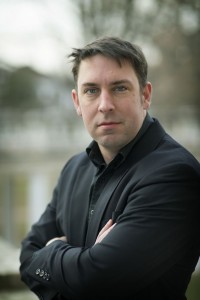Written by guest blogger, Joseph P. Laycock
As a scholar of American religious history and new religious movements, the “Satanic Panic” of the 1980s has been a recurring theme of my work. In the 1980s it was widely believed that organized cults of criminal Satanists operate throughout America, murdering hundreds of people a year in human sacrifices. Many who promoted these claims were well intentioned, but the core claims-makers were either liars or delusional and their stories were eventually debunked. With the exception of lone deviants like David Berkowitz and Richard Ramirez, no evidence of such cults was ever found. But for the conspiracy theorists the lack of evidence only proved how thoroughly Satanists had infiltrated law enforcement.
The Panic destroyed lives. The McMartin Preschool Trial, Dan and Fran Keller, the West Memphis Three, and the San Antonio Four are only some of the more infamous cases in which innocent people were imprisoned. In almost every case, those falsely accused of being cultists were marginalized people who lacked the resources to defend themselves. Frequently these cases featured self-appointed “occult crime experts”––modern day witch-hunters who claimed they knew the secret signs to detect the Satanists hiding among us.
The Panic lost momentum, it never really ended. On YouTube, “experts” still claim to identity the Satanic symbols in almost every aspect of popular culture. I am often approached by media who want to talk about Satanic cults and then refuse to listen when I explain that the existence of these cults has been debunked. I have also been consulted in legal cases in which claims about organized Satanism are still invoked. The claims are used to only to prosecute the innocent but to defend the guilty. One “expert” argued that a murder victim had been Satanist and that her killer had been defending himself from her attempts to sacrifice him. The victim, of course, could not defend herself against these charges.
Folklorists were among the first scholars to realize that claims of Satanic cults were simply urban legends and that people had told similar tales of conspiracies and dark rituals since Roman times. But even though humans have always told such stories, there is something uniquely upsetting about Satanic Panic.
I sometimes wonder why this is so. The damage of Satanic Panic seems minor when compared to terrorism, environmental devastation, or corporate fraud. Satanic Panic disturbs me not because of the scale of the problem but because it represents an inversion of justice. It takes those members of society empowered to protect us––law enforcement and church authorities––and pits them against the most vulnerable––daycare providers, adolescents, misfits. Ironically, this very real persecution of the innocent mirrors the imaginary atrocities of the Satanists, in which babies are murdered in rituals that invert conventional values.
Satanic Panic is a threat not just to vulnerable individuals but to our sense of a moral universe. Sociologist Peter Berger argued that human beings require a sense of an ordered world and that that nightmare par excellence occurs when this sense of order is stripped away. When I see liars hold themselves up as heroes and the innocent condemned, I experience an ontological threat in which chaos threatens to swallow order. This existential need for a just society is best encoded in the legal maxim fiat justia ruat caelum: “Let justice be done or the heavens fall.”
Joseph P. Laycock’s article, “Time Is a Flat Circle”: True Detective and the Specter of Moral Panic in American Pop Culture”, has been published in the Journal of Religion and Popular Culture Volume 27, Issue 3 2016. Read it today at JRPC Online – http://bit.ly/jrpc_273d or on Project MUSE – http://bit.ly/JRPC_MUSE273d

Comments on this entry are closed.